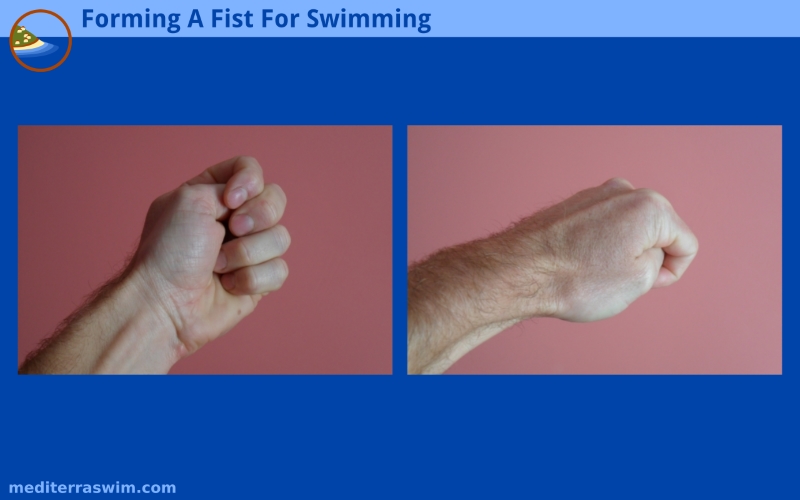How Can We Help?
What is Fist Swimming?
Fist swimming is the opposite of swimming with hand paddles. Rather than expanding the surface area of the hand with paddles, fist swimming reduces the surface area of the hand.

Why would a swimmer want to do this?
To force your body to figure out how to get a better grip on the water using the entire forearm, not just the hand. This kind of constrained activity is called a ‘self-limiting’ exercise in therapy lingo. The idea is to reduce capability in one way in order to (lovingly) force the body to figure out another way (a better way) to do the task.
By reducing the surface area you are urged to use more of the arm to get a sufficient grip – this is strengthening your motor connections and your muscles in precisely the way you want them to be used while swimming.
In a 25 (m or y) pool fist swimming might increase your SPL by +2. But it is a great exercise to attempt to lower your SPL with fist swimming.
It is important that you form the fist with as little tension in the hand as possible. Tension will reduce the sensitivity in your hand and arm, making it harder to feel the water. You may experiment with placing a small object in your hand to hold, or keeping your thumb inside or outside the grip of your fingers.
To allow complete relaxation in the hand you can purchase actual ‘fist-gloves’.

Fist gloves are nice in this regard, but the can break and wear out quickly. So, you might be motivated to either make your own fist or to invent your own fist-gloves out of something less expensive.
